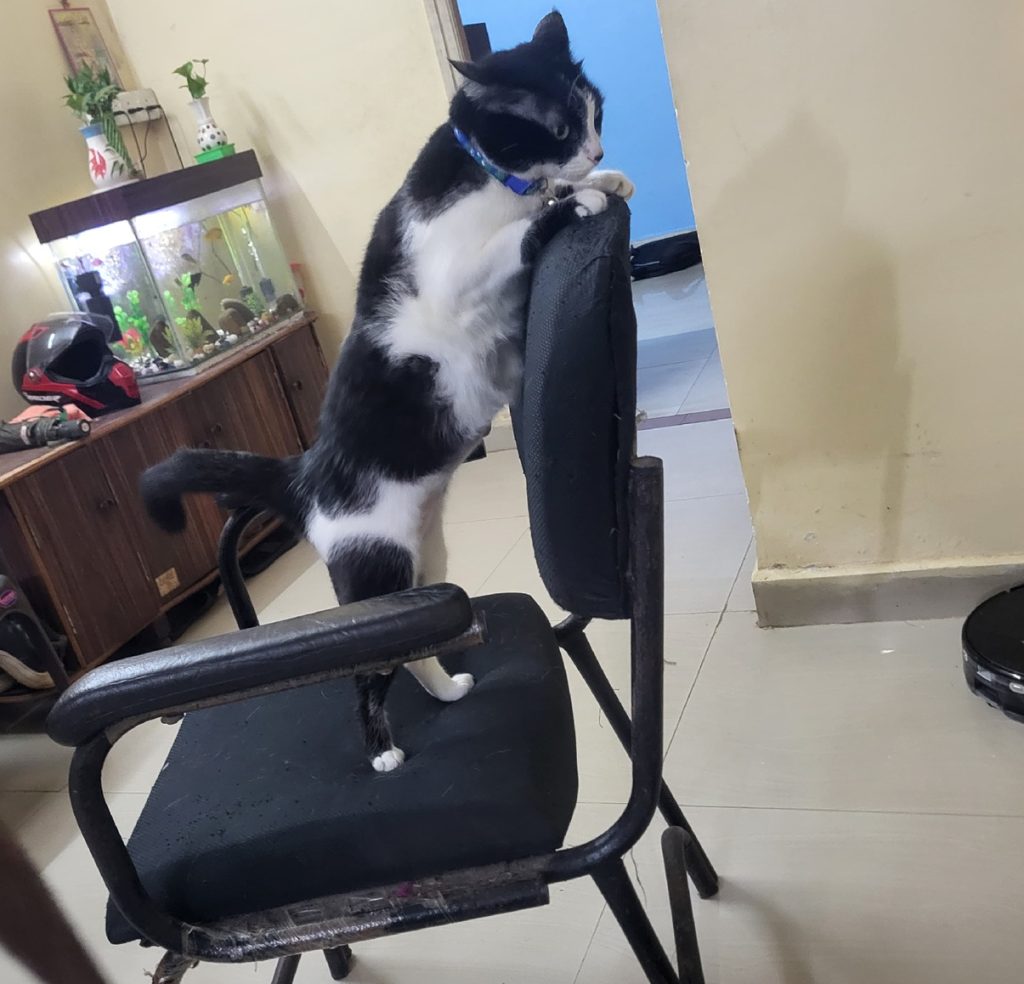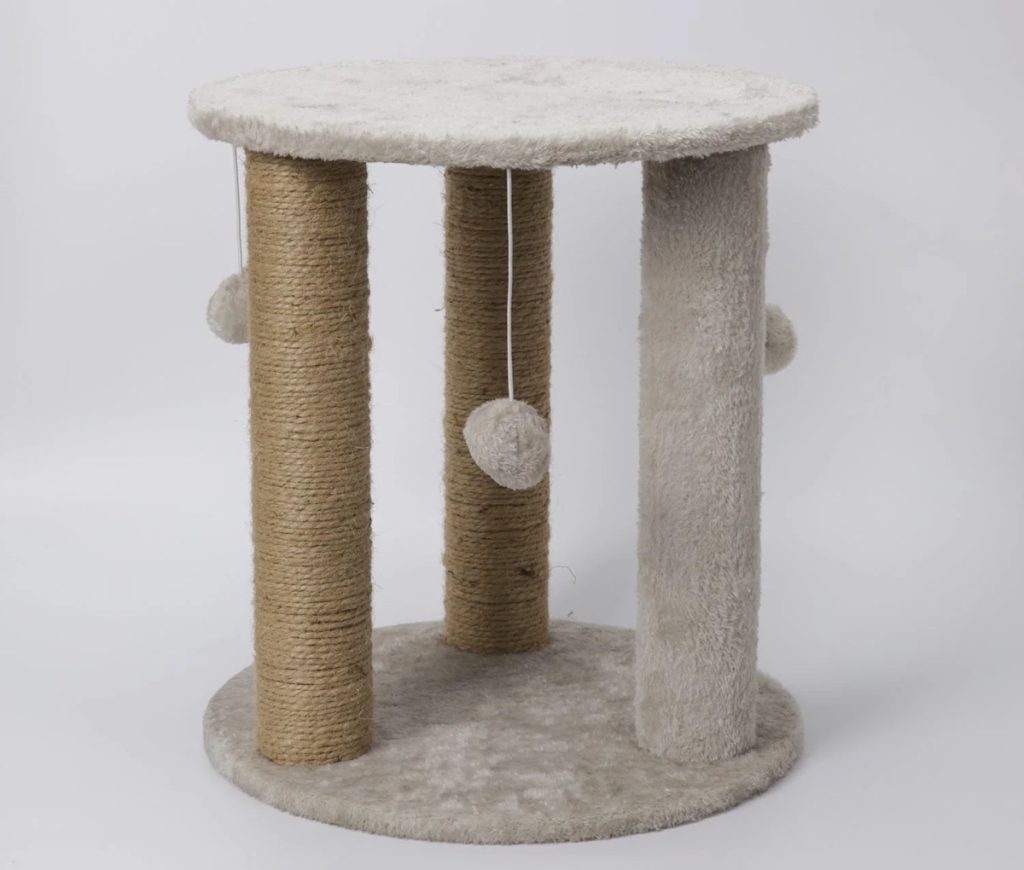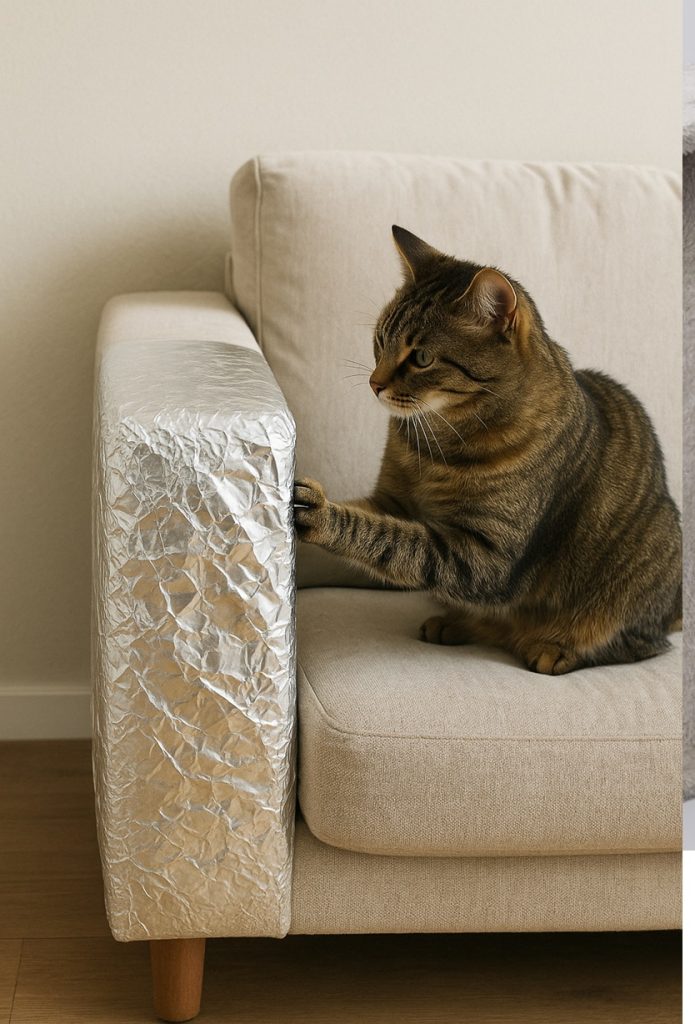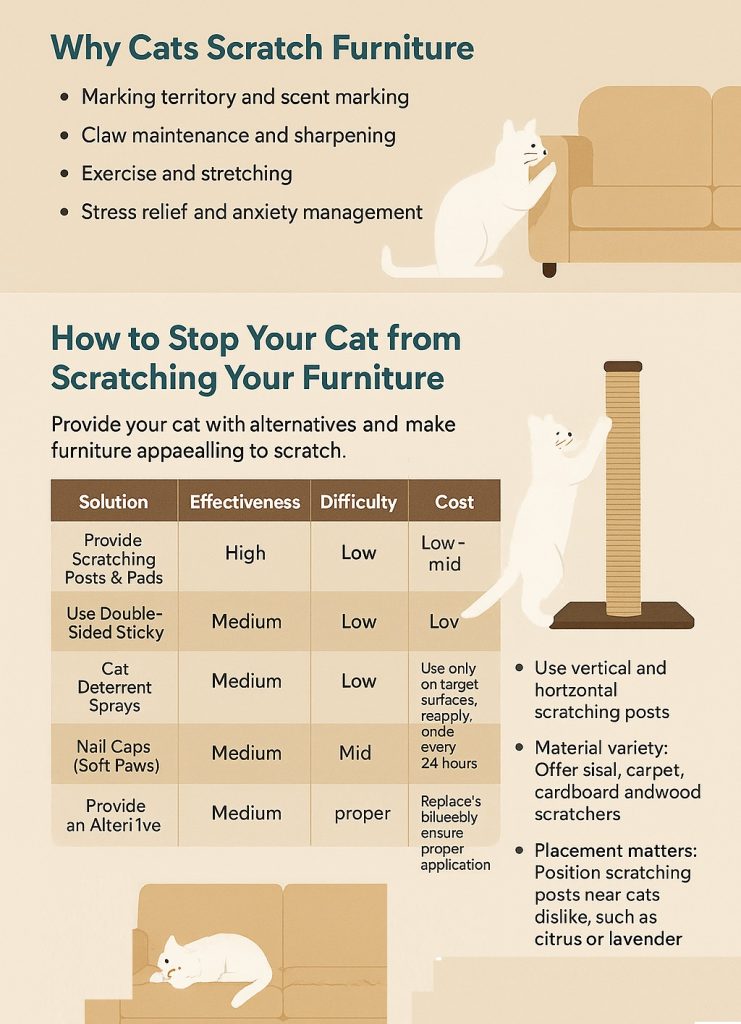Is your beautiful new couch now a kitty scratching post? You’re not alone. While a cat’s need to scratch is an instinct, the damage to your furniture doesn’t have to be. It can ruin your furniture or even the valuables you have at your home.
In this blog, we will learn why a cat scratches and how to stop cats from scratching furniture. We will share a few actionable solutions to help you in this regard.
- Don’t punish—redirect: Offer enticing alternatives and reinforce their use with praise or treats.
- Use a multi-layered approach: The combination of scratching posts, deterrents, training, and pheromone products works best.
- Placement is critical: Put scratchers near previously scratched items and socialize your cat with them.
- Satisfy both needs: Ensure scratchers allow for both full-body stretching (tall posts) and play.
- Stay consistent: Results come faster with regular reinforcement and patience.
Why Do Cats Scratch Furniture?
Cats scratch furniture by instinct. In fact, cats do not scratch the furniture, but they need something hard to scratch. In the wild, cats had trees to scratch and in the modern domesticated life, the closest thing that resembles a tree is furniture.

A cat generally scratches furniture for the following reasons –
- Marking territory and scent marking: Scratching leaves visible claw marks and deposits pheromone scents from glands on their paws, effectively marking their territory.
- Claw maintenance and sharpening: This action helps cats remove dead nail sheaths, keeping their claws sharp and healthy.
- Exercise and stretching: Scratching promotes muscle health, allows for a full-body stretch, and can be part of their morning routine.
- Stress relief and anxiety management: Many cats find scratching enjoyable and use it as a way to relieve boredom or manage stress and anxiety.
If you are wondering how to stop cats from scratching your furniture, you need to remember one thing – it is not about stopping it, but redirecting your cat to something else to scratch. It is much more about retraining than admonishing your cat for scratching the furniture.
How to Stop Your Cat from Scratching Your Furniture?
Well, as we said already, you need to provide your cat with the best way to stop scratching. All our tips and methods are aimed at directing the cat to an alternative.
| Solution | Effectiveness | Difficulty | Cost | Quick Tips |
|---|---|---|---|---|
| Provide Scratching Posts & Pads | High | Low | Low–Mid | Place near problem areas & reward use |
| Use Double-Sided Sticky Tape | Medium | Low | Low | Apply to scratch-prone furniture |
| Cat Deterrent Sprays | Medium | Low | Low | Use only on target surfaces; reapply once every 24 hours |
| Nail Caps (Soft Paws) | Medium | Medium | Mid | Replace biweekly; ensure proper application |
| Regular Claw Trimming | Medium | Low | Low | Trim every 2–4 weeks |
| Feliway/Calming Diffusers | Medium | Low | Mid | Use in high-stress/multi-cat homes |
| Furniture Covers/Slipcovers | High | Low | Mid | Use as temporary barrier during training |
| Training & Redirection (Clicker Training) | High | Medium | Low | Always use positive reinforcement |
Provide it with an alternative
You can give a few alternatives for your cat so that they can avoid scratching your furniture and switch to another scratching item. Make sure that the alternative you provide is attractive to your cat.

Some good options that can be handy are
-
Use vertical and horizontal scratching posts: Some cats prefer horizontal scratchers, while others like tall posts.
-
Material variety: Offer sisal, carpet, cardboard, and wood scratchers.
-
Placement matters: Position scratching posts near scratched furniture and high-traffic areas.
American Society for the Prevention of Cruelty to Animals recommends spraying catnip on the scratch posts so that your cat gets attracted to it and ultimately makes it the favourite scratching object.
Make the furniture unattractive
If you have been a cat parent for long, you know what your cat hates. You can use this knowledge to make the furniture unappealing ti your cat.

After years of being a cat parent, I found these specific methods to be most effective in stopping my own cat from scratching the furniture –
-
Double-sided tape: Cats dislike sticky surfaces.
-
Furniture covers: Use temporary slipcovers to protect and discourage scratching.
-
Cat-safe deterrent sprays: Choose formulas with scents cats dislike, such as citrus or lavender.
Positive reinforcement and training
Cats are known to be animals of habit. I have noticed that once habituated, my cat makes it a point to scratch its claws on the same furniture every day. A positive reinforcement can help your cat learn new habits. But, believe me, based on what I have learned being a cat parent for over 10 years, it isn’t easy to train a cat when you compare it to training a dog.
I have used and I generally recommend the following tips in training a cat –
-
Reward with treats: Praise and give treats when the cat uses the approved scratcher.
-
Clicker training: Teach your cat to use posts for rewards.
-
Never punish or yell: Redirect gently to maintain trust and reduce behavioral problems.
Regular Claw Care
Taking care of the claws of your cat can help them avoid the urge to scratch furniture.
Here are a few options that can be helpful –
-
Trim nails regularly: Use cat-safe clippers to prevent damage.
-
Nail caps: Soft, temporary caps prevent furniture damage while allowing natural behavior.
Use calming techniques
Cats tend to scratch furniture not just for cleaning their claws, but also when they are stressed out or panicked. Introducing a few claiming techniques can help your cat reduce stress and thus avoid the scratching behaviour.
A few good ideas that can be helpful in this context are
-
Pheromone diffusers: Products like Feliway help reduce stress-related scratching, especially in multi-cat households.
-
Consider natural calming remedies and anxiety relief strategies for cats.
Scratching Posts – A Few Parameters that Can Help

If you are buying or using a DIY scratching posts, it is important to focus on a few parameters.
| Product Type | Size | Surface Material | Price Range | Best For |
|---|---|---|---|---|
| Vertical Post | 30–32 in. tall | Sisal rope | $20–$60 | Stretchers, athletic cats |
| Horizontal Pad | 18–24 in. length | Cardboard | $10–$25 | Senior and less active cats |
| Cat Tree Tower | 48–72 in. tall | Sisal/carpet | $50–$150 | Kittens, climbers |
| Wall-Mounted Pad | Varies | Sisal/carpet | $15–$35 | Small living spaces |
| Scratching Lounge | 20–36 in. length | Cardboard | $12–$40 | Cats who like to rest and scratch |
There are a few important factors that you should focus on when placing the scratch posts.
- Place the scratch post near its loved ones – Never place the scratch posts in a secluded place. Cats do not like being away from their loved ones.
- Near favourite scratching areas – Always keep the scratch post near your cat’s favourite scratching area. These include the side of a couch, near a frequently used chair, or next to a bed.
- Near entry and exit points – Many cats like to scratch near doors (entryways, exits, or room thresholds) as a territorial marker.
- High traffic areas – Keep your scratch post in areas that your cat frequents.; Since cats scratch first thing after they wake up, place a scratch post somewhere near the spot where they regularly nap.
Signs You Should See a Vet
Well, here are a few ways and indicators to show that you should consult a vet.
-
Sudden Increase in Scratching: If your cat suddenly starts scratching excessively or in unusual locations, it could indicate pain, discomfort, or anxiety.
-
Skin Issues or Hair Loss: Look for bald patches, sores, bleeding, scabs, or inflamed skin where your cat scratches frequently. These may signal skin allergies, infections (such as ringworm), flea infestations, or other dermatologic problems.
-
Behavioral Changes: Accompanying symptoms like hiding, aggression, changes in appetite, or excessive vocalization may point to stress, illness, or pain requiring medical evaluation.
-
Rapid Decline in Grooming or Overgrooming: Cats dealing with pain or health problems may stop grooming, or conversely, overgroom to the point of losing fur or damaging skin.
-
Injuries from Scratching: If claws get caught, torn, or result in persistent bleeding; or if your cat is limping or holding up a paw, consult a vet promptly.
-
Failure of At-Home Interventions: When you’ve consistently tried positive redirection, deterrents, and environmental changes and your cat’s scratching remains severe or destructive.
-
Multi-Cat Households: Sudden scratching or marking in a multicat home could indicate escalating conflict, medical problems, or stress that might be helped by professional advice.
Conclusion
In summary, addressing cat scratching is all about understanding and respecting your cat’s natural instincts, while using a combination of positive strategies to protect your furniture. By offering a variety of scratching alternatives, making your furniture less appealing, using positive reinforcement, keeping your cat’s claws groomed, and supporting their emotional health with calming solutions, you’ll foster better behavior and a more harmonious home.
FAQs
Why do cats scratch furniture?
Cats scratch to maintain claws, mark territory, stretch muscles, and relieve boredom or stress. It’s a natural instinct important to their physical and emotional well-being.
Do deterrent sprays work for cats?
Deterrent sprays can help reduce unwanted scratching, especially when combined with scratching post training and environmental enrichment.
Are nail caps safe for cats?
Pet-safe nail caps (like Soft Paws) are safe if sized and applied correctly, offering a humane way to protect furniture without harming the cat.
Is declawing a humane solution?
Declawing is painful and detrimental to cats’ welfare and is strongly discouraged. Humane alternatives like claw trimming and behavioral training should be your focus.




Add Comment